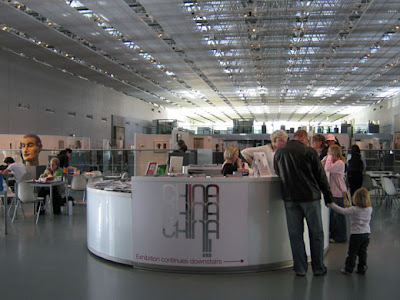
Why are so many instruments in schools in such poor condition? I have heard poor storage facilities cited as an excuse and, while there is certainly some truth in that, I believe the problem has a cultural basis. Why? Because from the time I went to high school, and was first exposed to instruments that were neither pianos nor pictures on record sleeves, I have come across instruments that have been mistreated and misunderstood regardless of the space given over to their storage. Like social attitudes to death, sex, children, gender, race and class the prevailing attitude to musical instruments will take time to change. If we want to see that change in our lifetimes we must start now.
Those of us familiar with gamelan music will know that the term 'gamelan orchestra' refers not to the musicians, who come and go during a performance, but to the instruments in a particular set. Each gamelan has a soul that resides in the large gong, 'gong ageng', of which there is one in every set. The instruments of a set are all made at the same time and their tuning, taken from gong ageng, is unique to that orchestra. When the orchestra is ready it is inaugurated with much ceremony. The gamelan is used in religious and social rituals and is accorded due reverence. Children grow up respecting the instruments of the orchestra and this attitude has endured for generations.

I am certainly not suggesting a cult of musical instrument worship. I know many musicians who have a very close relationship with their chosen instrument but this is more akin to that between craftsmen and their tools. But ask any carpenter why tools are abused and they will tell you it is a lack of proper education. A carpenter only looks after the tools of the trade. A music teacher, on the other hand, looks after a lot of instruments they don't play and possibly don't even like. But they must still treat them with respect and teach that respect to their students and colleagues who will learn best by example.
So what brought this on? I gave a workshop in an infant school the other day and neglected to lay down the ground rules. Fortunately the children were very well behaved but I was forever playing catch-up in terms of conveying what was acceptable behaviour. So, to remind myself, I will list some below. Please feel free to add to them.

1. Treat the instruments with respect, they are expensive
2. Wait until an instrument is passed to you, never try to take one from someone else
3. Explore the instruments to see what sounds they can make but don't treat them roughly
4. Place instruments carefully on the floor (or table) when you've finished with them, never drop or throw them
5. Walk around the instruments, never try to step over them (Stepping over a gamelan instrument is considered a mark of disrespect bordering on sacrilege. The rule prevents damage to instruments and players alike.)
6. At then end of the session, put the instruments away properly
It always surprises me how many secondary school children (and indeed adults) demonstrate a lack of awareness of any of the above. Either they were never exposed to instruments in their first years at school or they were set a poor example. There's a sense in which the music department/cupboard resembling the physics lab would be no bad thing.
 April's free Game of the Month at playwithsound.com is for two players at a time, sharing a xylophone. It's based on a West African balafon playing technique and is very good for developing rhythm and co-operation skills as well as exerting a calming influence on players and others in the vicinity.
April's free Game of the Month at playwithsound.com is for two players at a time, sharing a xylophone. It's based on a West African balafon playing technique and is very good for developing rhythm and co-operation skills as well as exerting a calming influence on players and others in the vicinity.































